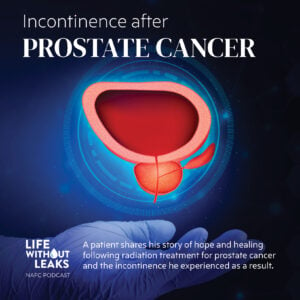pelvic organ prolapse treatment (sometimes referred to as POP) is a very common condition that affects millions of women worldwide and can cause significant quality of life issues for women who experience it. A prolapse can feel uncomfortable, and even painful and may prevent a woman from enjoying things that she used to.
Luckily there are treatment options available to manage the condition, and not all of them involve surgery. Here, we’ll examine various non-surgical options to try if you’re suffering from pelvic organ prolapse.
What is Pelvic Organ Prolapse?
Your pelvic floor muscles play a vital role in supporting your internal organs, specifically the uterus, bladder, and rectum. Picture a hammock or sling that is connected to the pelvis and gently hugs and holds these organs up on a daily basis. When the pelvic floor muscles become weakened or compromised, one or more of these organs may “fall” into the vagina, which is called a pelvic organ prolapse. This condition can leave many women feeling uncomfortable or unsure about their bodies.
Who does it affect?
Many women develop a pelvic organ prolapse during or after childbirth. The extra pressure placed on the pelvic floor during pregnancy, plus the trauma that can occur during childbirth can compromise the pelvic floor, leading to weakness and eventually a prolapse. Many women may develop a slight prolapse after childbirth and not even know it. However, over time, if the muscles are not strengthened, a prolapse can become worse and may make itself known once menopause kicks in, which causes the pelvic floor tissues to thin and weaken even more.
It’s not just childbirth that causes prolapse – any activity that puts repeated pressure on the pelvic floor can lead to a dropped bladder, uterus, or rectum. Things like chronic coughing or chronic constipation can be to blame too.
6 Non-Surgical Treatment Approaches for Pelvic Organ Prolapse
Luckily there are many treatment options available for women suffering from a POP. From simple lifestyle tweaks to surgical interventions, women have an arsenal of choices. And while surgery is often a route for those with severe pelvic organ prolapse, there are also many non-surgical treatment options that can help make a real difference in your symptoms too. Below are 6 treatment options to try before opting for surgery.
It’s not just childbirth that causes prolapse – any activity that puts repeated pressure on the pelvic floor can lead to a dropped bladder, uterus, or rectum. Things like chronic coughing or chronic constipation can be to blame too.
Pelvic floor exercises and physical therapy
Ladies, let’s talk Kegels! These magical pelvic floor exercises are like a superhero for your lady parts. Strengthening those all-important muscles not only supports your organs but also improves bladder control and intimacy. Together with other pelvic floor exercises tailored to your needs, you’ll be amazed at how strong you can become!
Kegels can be difficult to master, and they aren’t always for everyone so be sure to talk with a trained pelvic floor health specialist who can help guide you in your routine and develop a plan just for you. Beyond Kegels, there are lots of exercises you can do to help strengthen the pelvic floor and surrounding muscles and a physical therapist can help make sure you’re choosing exercises that will work for your specific issue.
Visit NAFC’s Pelvic Floor Health Center to learn more about the pelvic floor and your treatment options. You can also sign up for our free 6-week guide to better pelvic floor health!
Pessaries as a conservative management option
Meet your new best friend – the pessary! These ingenious, flexible devices provide a gentle lift and hold for your prolapsed organs, offering relief and stability. Available in various shapes and sizes, they’re customizable to fit your unique needs. Say goodbye to discomfort and hello to freedom!
Pessaries are available in all sorts of sizes and you can be fitted for one right in your doctor’s office. It may take a couple of tries to find one that fits just right but don’t give up. They can provide a world of support and help make your pelvic organ prolapse symptoms much more bearable.
Hormone therapy and its role in POP treatment
Estrogen, the hormone we all know and love! It plays a significant role in maintaining pelvic tissue strength and elasticity. However, once women approach menopause, estrogen levels begin to decline, which can lead to thinner pelvic floor tissue and weaker muscles.
For some women, hormone therapy might be a game-changer, easing POP symptoms and enhancing overall well-being. This may be used as a stand-alone option or in conjunction with other treatments like physical therapy, and can be given orally or even applied as a cream, which can sometimes produce fewer side-effects. These treatments can ease some of the symptoms of a pelvic organ prolapse by strengthening the vaginal tissue, making it less dry and potentially less painful. Estrogen comes with it’s own set of side-effects so It’s essential to discuss the pros and cons of this treatment with your doctor.
Lifestyle modifications for managing POP
A few simple lifestyle tweaks can also work wonders. From nourishing your body with a pelvic-friendly diet to maintaining a healthy weight, small changes can make a big difference.
You want to avoid placing any extra pressure on the pelvic floor so make sure you’re eating healthy foods and drinking plenty of water that will help you avoid constipation. If your weight is an issue, a healthy diet, and light exercise can also help to shed some pounds, relieving some of the pressure. These measures not only address your current symptoms, but they can help to prevent your pelvic organ prolapse from getting worse.
Complimentary and alternative therapies for pelvic organ prolapse.
While still somewhat exploratory, there are other things you can try to help alleviate pelvic floor discomfort. These options may be a great alternative to surgery, and can often work with the treatment options stated above:
- This ancient Chinese technique uses tiny needles to stimulate different parts of the body and is thought to stimulate the central nervous system, which may also stimulate the body’s natural healing abilities. And, some studies have found acupuncture effective in reducing symptoms of pelvic organ prolapse.
- Strike a pose, find your Zen, and embrace the power of yoga! Certain poses can work wonders for your pelvic floor, providing the strength and support it craves. There are many different yoga poses or exercises that can not only strengthen the pelvic floor muscles but help to relax the pelvic floor too.
Pelvic Organ Prolapse Prevention
Of course, prevention is always the best medicine! You can prevent pelvic organ prolapse from worsening by maintaining a healthy lifestyle, avoiding heavy lifting, and practicing pelvic floor exercises regularly. Regular pelvic health check-ups can also help detect early signs of a worsening POP and address them quickly. Learn more about maintaining a healthy pelvic floor at NAFC’s Pelvic Floor Health Center.
Pelvic organ prolapse is a common condition that can significantly impact a person’s quality of life. Thankfully, there are several non-surgical treatment options available, ranging from pelvic floor exercises and physical therapy to pessaries, hormone therapy, and lifestyle modifications. Incorporating complementary therapies like acupuncture and yoga can further enhance the overall management of POP. By seeking professional help and adopting a holistic approach to pelvic health, individuals can effectively manage pelvic organ prolapse and improve their well-being. Remember to consult a healthcare provider for personalized guidance and support throughout your treatment journey.







One Response
I ahve had a prolapse for a number of years, but withoit it causing me to much, if any uncomfortability. However, as I have aged it has become a problem. At times I ambothred with incontenency. And as I entered my 79 8th birhtday at the beginnin gof this year, I have noticed a change as I am most often bothered by constipayion. I have been leary of surgery because I have a neice that did the mesh surgery and it was hell for her, endding in a class law suit.